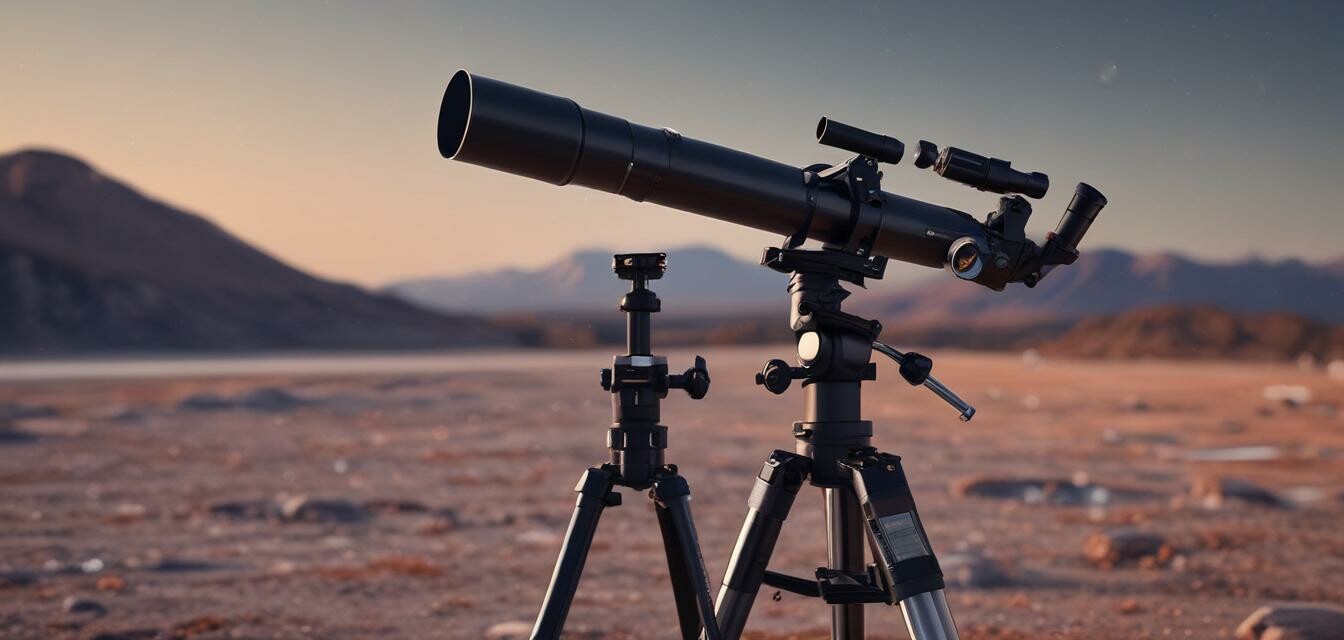
Ultimate Guide to Telescope Mounts for Planet Observation
Key Takeaways
- Choosing the right telescope mount is essential for optimal planetary viewing.
- There are different types of mounts: Altazimuth and Equatorial.
- Consider factors such as stability, ease of use, and tracking capabilities.
- Matching your telescope type with the right mount will enhance your stargazing experience.
- Explore telescope accessories to enhance your mount's performance.
When it comes to observing planets, the telescope mount you choose can make all the difference in your overall viewing experience. With a wide array of options available, understanding the characteristics and benefits of each mount style ensures you select the best fit for your needs. This guide delves into the essential features and factors to consider, allowing you to enhance your planetary observation experience significantly.
Types of telescope mounts
Primarily, there are two main types of telescope mounts: Altazimuth and Equatorial. Understanding these categories will help you make an informed decision.
| Mount Type | Description | Best For |
|---|---|---|
| Altazimuth | Moves up and down (altitude) and left and right (azimuth). | Quick setups and casual viewing. |
| Equatorial | Aligns with the Earth's rotation, tracking objects smoothly. | Astrophotography and serious observations. |
Altazimuth mounts
Altazimuth mounts are popular among beginners due to their simplicity. These mounts allow users to move the telescope along two axes easily. This straightforward operation is ideal for those who want to quickly point their telescope toward planets and stars without much hassle.
Equatorial mounts
On the other hand, equatorial mounts are more suitable for serious astronomers interested in tracking celestial objects. By aligning with the Earth's axis, these mounts compensate for the planet's rotation, allowing for smoother tracking of planets, especially during long observation sessions.
Factors to consider when choosing a mount
Selecting the right mount goes beyond just the type. Here are some key factors to consider:
- Stability: Ensure the mount is sturdy enough to support your telescope weight and withstand minor wind disturbances.
- Weight capacity: Check the weight rating of the mount and ensure it can comfortably accommodate your telescope.
- Tracking mechanism: Consider whether you need manual or motorized tracking based on how you intend to observe.
- Ease of setup: Opt for a mount that can be quickly assembled and disassembled for transport.
- Price: Budget wisely; a good mount is an investment that enhances your entire observing experience.
Mount accessories to enhance your experience
To further improve your planet observation, there are various telescope accessories you can consider integrating with your mount:
- Counterweights: Help stabilize your mount while using heavier telescopes.
- Finderscopes: Aids in quickly locating celestial objects.
- Dew shields: Reduce moisture on your optics for clearer views.
- Tripod extensions: Provide additional height for a better viewing angle.
Conclusion
Choosing the right telescope mount is crucial for planet observation. Whether you go for the simplicity of an Altazimuth mount or the precision tracking of an Equatorial mount, each type has its unique set of advantages tailored to different observing styles. By considering factors such as stability, weight capacity, and tracking mechanisms, you can ensure a stellar stargazing experience. Remember to explore various telescope accessories for additional enhancements to your setup.
Pros
- Enhances overall planetary viewing experience.
- Variety of mount types for different needs.
- Offers stability and tracking capabilities for serious stargazers.
Cons
- Can be pricey depending on the features.
- Complex mounts require time to master.
- Not all mounts suit every type of telescope.